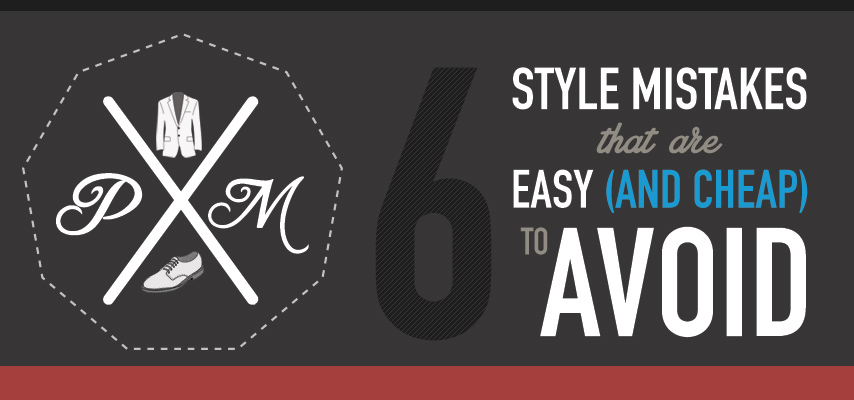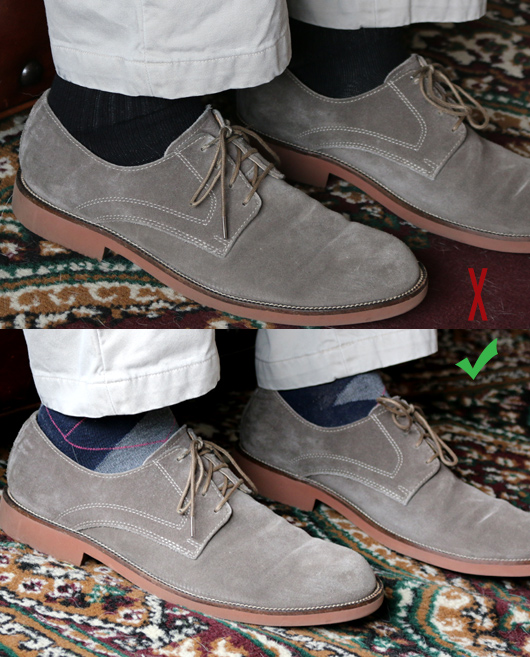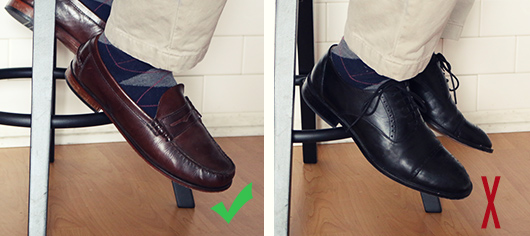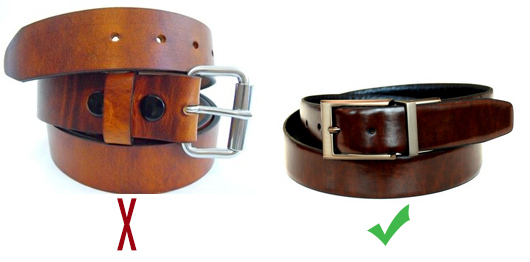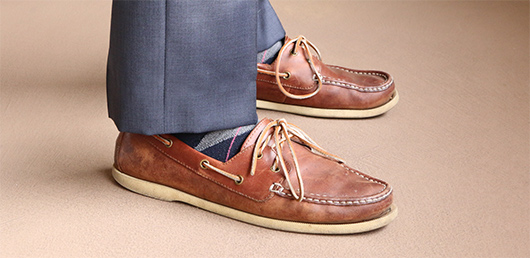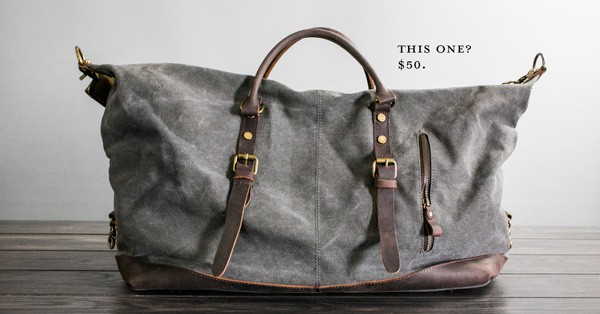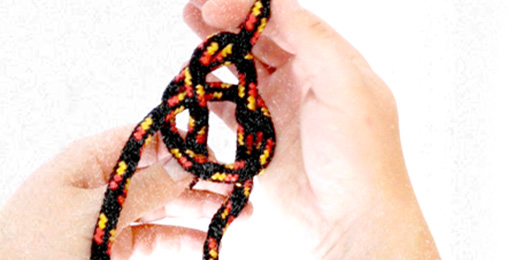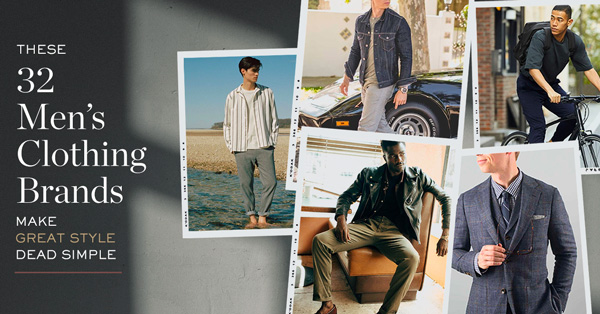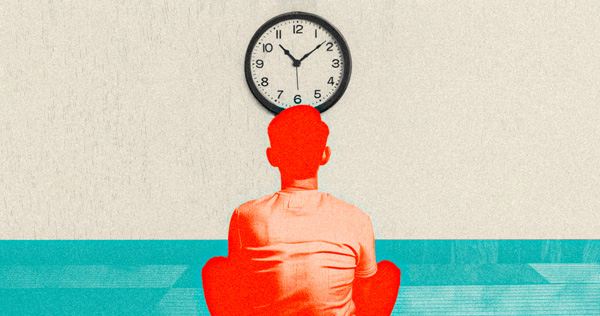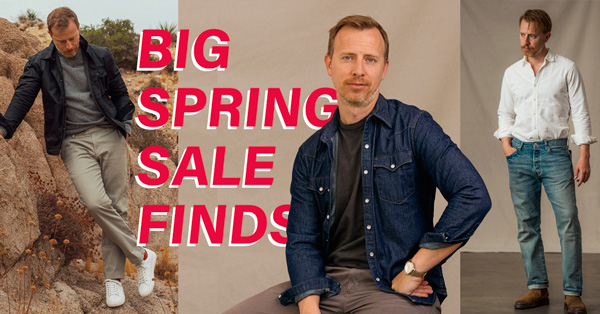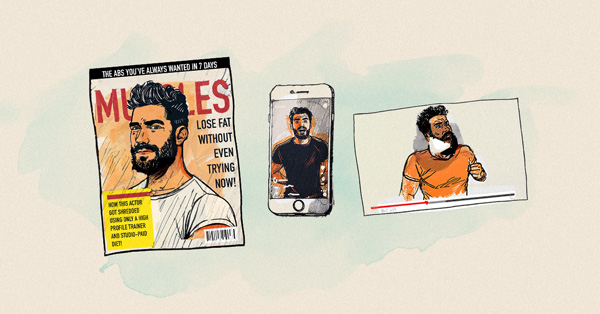If you’re reading Primer Magazine, you’re probably the type of person who wants to put their best foot forward every single day. You’re interested in living a full, rich life and becoming the best man that you can be.
Maybe you already put a lot of effort into dressing and grooming and personal presentation. Or maybe it’s still a weak point in your life.
The truth is, whether you like it or not, the way you look is a huge part of your development. It influences your relationships, careers and self-esteem.
Sometimes the thought of stepping up your style is a little overwhelming. You see all of these style blogs and forums critiquing the smallest details of how a suit should fit. You see people tweeting pictures from fashion shows and dropping names of Italian designers whose brands you can’t pronounce and whose clothing you can’t afford.
It seems confusing and expensive, and it feels exclusive. So where do you even start? The good news is, you can take action to improve your style today with these six simple tips.
1. Wearing Solid White or Black Socks
Compared to the rest of your getup, socks are often an afterthought. Conventional wisdom says that your socks should match your trousers, although stylish men often coordinate their socks with the rest of their outfit.
Either of these methods is fine, but you should avoid two common mistakes: Wearing plain white or black socks. White socks (especially crew, tube or ankle socks) should be reserved for sneakers and athletic scenarios, like playing pickup basketball or doing crossfit.
Black socks should only be worn with dark trousers (think charcoal or black suits) and black shoes. Don’t wear black socks with khaki pants or light brown shoes.
If you want to upgrade your dark socks, go with dark grey, purple, or a pattern.
2. Wearing Flip Flops With Jeans/Chinos
This rule ends up on almost every menswear “style sins” list out there, so it’s kind of surprising that so many men are still violating it. You see it all the time, especially in the warmer months:
Throwing on your trusty brown leather flip flops will ruin an otherwise acceptable getup. Some argue that flip flops are never acceptable for men, but I think they’re kosher for a few different occasions, such as the beach, the pool or the shower at your gym.
Basically, if you’re wearing shorts or, well, nothing at all, then flip fops are okay. If you’re wearing pants or nice shorts, step it up a notch by swapping your flip flops for any of these alternatives:
- Boat shoes (my personal favorite)
- Loafers
- Espadrilles
- Sandals
I promise if you follow this rule, you will instantly be more stylish than most other guys at the boardwalk.
3. Black Dress Shoes With Khakis
Black dress shoes are inherently more formal than their brown counterparts, and they are really meant to be worn with dark trousers and suits (i.e., a black suit or tuxedo).
This isn’t to say that it’s a “rule” not to wear black shoes with non-black pants, but lighter colored shoes will usually work better, especially in the daytime.
When in doubt, go with medium to dark brown Oxfords, ankle boots and loafers. Most guys can get away with only owning one pair of black dress shoes.
4. Oversized, Casual Belts With Dressy Outfits
Many non-dress belts are too wide for business casual and formal outfits. Unless you are bigger-than-average, stay away from any belts that are wider than 1.25”. Shoot for 1”. If you’re on the shorter side, look for extra thin belts (less than 1” thick).
You can find these belts at most stores and online shops. Or, you can make one yourself. Just don’t settle for the extra wide, thick leather belts that you see most men wearing. They’re really only appropriate for casual outfits with jeans and chinos. And even then, they work much better for bigger, taller guys.
If your trousers fit well around the waist, you may not need a belt to hold them up. You can simply ask your tailor to remove the belt loops and go beltless. this is an elegant look, especially for shorter gents who want to streamline their figure by eliminating horizontal lines.
5. Wearing a Backpack (When You’re Not a Student)
You probably see this everyday – the guy on his way to work with a huge, sea turtle-shell size backpack hanging off his back. Straps digging into his shoulders, he’s hunched forward just to balance out its weight.
Or, just as bad is the man with the oversized 19” laptop bag hanging down by his butt, bouncing around with every step.
These unfortunate (and often unnecessary) accessories can ruin an otherwise perfect getup. Don’t be a victim of this look, lest you be mistaken for a college freshman.
Stick with a reasonably-sized cross body bag, like a messenger or day bag. If you don’t carry a laptop, don’t be afraid to carry a smaller brief (8-11” wide/tall) for your other things – keys, pen, water bottle, etc.
Make sure to shorten the strap so the bag isn’t hanging down by your butt. And if you’re a smaller guy, don’t buy some huge 17-incher. It will look oversized.
Alternatively, if it suits your style, you can carry a brief case. There are plenty of stylish, sleek briefcases for sale these days, so you can definitely find one that you love without breaking the bank.
6. Wearing Boat Shoes With Dress Pants
Boat shoes may look like loafers, but they’re meant to worn casually and shouldn’t be paired with dressy trousers or slacks.
Ditch the boat shoes, and get into some loafers.
How can you tell the difference? Well, boat shoes and loafers have distinct details that allow you to tell them apart:
- Loafers may be dressed up or down. For example, you could go sockless and wear them with shorts, or you could wear them with trousers and a jacket.
- Boat shoes, on the other hand, may only be worn with casual outfits and should be worn without socks in most situations.
Conclusion
Remember: style isn’t fashion. It doesn’t have to be expensive or trendy. It isn’t about a brand or what’s going on in NYC or LA or anywhere else. Style is what you have when you decide that you respect your fellow man enough to dress well everyday, every time you leave your house.
Sure, it manifests as clothing, but it’s really an attitude. And it doesn’t have to be hard.
Of course, that doesn’t mean it’s easy. But it’s more about avoiding mistakes than getting everything right. If you follow these six pieces of advice, you’ll never be mistaken for a style noob, and you can focus on the next steps in your style journey, like nailing fit and color.



